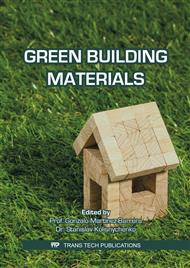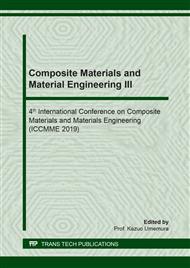p.357
p.365
p.371
p.377
p.385
p.391
p.397
p.404
p.410
Ladle Furnace Slag as a Sustainable Binder for Masonry Mortars
Abstract:
Nowadays, the environmental aspect of industrial waste management has got urgent. The reusing of these residues in the civil building is increasing, since all industries have developed a growing concern for the emptying of natural resources. The ladle furnace slag (LDF-slag), a by-product of the secondary refining of steel, is mainly composed of calcium and calcium magnesium silicates. It has the potential to be a sustainable binder for mortars because the composition of LDF-slag is fairly similar to Portland cement (PC) clinker. Thus, this paper aims to improve the cementitious properties of LDF slag. The properties of cement mortars with LDF-slag were investigated including water demand of normal consistency, setting time and compressive strength. The experimental results show that the suitable specific surface area of LDF-slag is 1200 cm2/g (cement replacement amount is 20 wt%) and addition of LDF-slag with different fineness has retarding effect on cement.
Info:
Periodical:
Pages:
385-390
Citation:
Online since:
May 2019
Authors:
Price:
Сopyright:
© 2019 Trans Tech Publications Ltd. All Rights Reserved
Share:
Citation:



